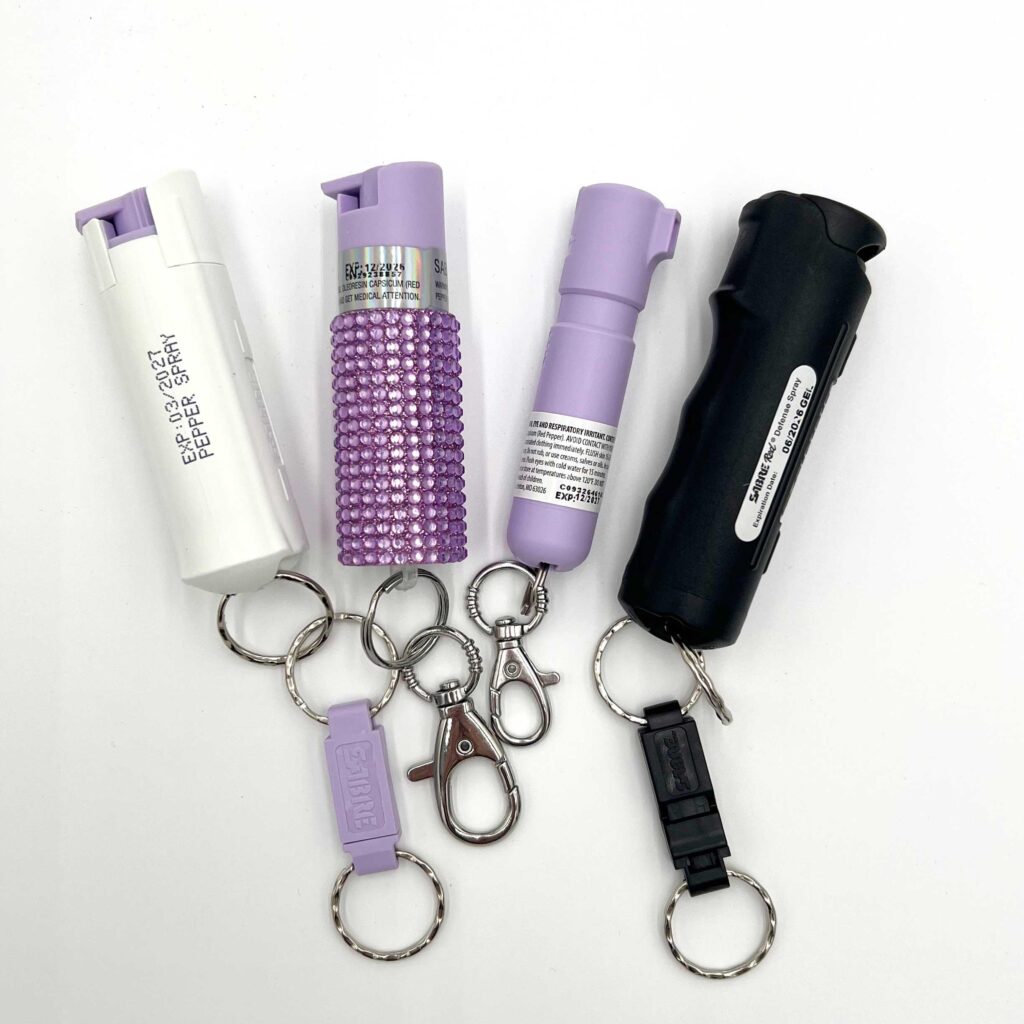Table of Contents
- Understanding the Chemical Changes That Indicate Pepper Spray Degradation
- Visual and Physical Indicators That Your Pepper Spray Is No Longer Effective
- How to Safely Test Your Pepper Spray for Potency at Home
- Best Practices for Storage and Timely Replacement of Pepper Spray Units
- To Wrap It Up
Understanding the Chemical Changes That Indicate Pepper Spray Degradation
Over time, the active components in pepper spray – primarily capsaicinoids – undergo chemical transformations that diminish their potency and effectiveness. These molecular breakdowns are often triggered by factors like heat, light exposure, and oxidation. When degradation occurs, the once fiery oils begin to lose their stability, leading to reduced inflammation and irritation upon deployment. This subtle yet critical shift means that the spray may no longer incapacitate an attacker as intended, posing serious safety risks. Recognizing these underlying chemical changes before carrying an expired canister is essential for personal defense preparedness.
Some telltale chemical signs of degradation include discoloration of the liquid, separation into uneven layers, and the presence of sediment within the canister. These visual cues are tied to the breakdown of the spray’s emulsifying agents and the oxidation of capsaicinoids, which ultimately alter its chemical composition. Typically, degraded formulas can appear darker or cloudy rather than their original vibrant reddish-orange hue. Underlying these changes, the pressure inside the container may also falter due to gas leaks or compromised propellants, further revealing loss of integrity. Monitoring these subtle yet definitive indicators helps ensure you replace your pepper spray before it becomes incapable of performing its crucial role.
Visual and Physical Indicators That Your Pepper Spray Is No Longer Effective
Often, the first clues that your pepper spray might no longer be reliable come from the way it looks and feels. Discoloration is a major red flag-if the liquid appears cloudy, separated, or has shifted from its original vibrant hue to a dull or murky tone, it’s a strong indicator that the chemical composition has degraded. Additionally, any unusual sediment or floating particles inside the canister suggest contamination or breakdown of the active ingredients. The exterior casing itself can also offer hints; dents, rust, or corrosion around the nozzle or seams might compromise the spray’s integrity and pressure.
Physically testing the spray without discharging it fully can further reveal its condition. A weak or inconsistent spray pattern, such as a sputtering stream instead of a strong, focused burst, often means the propellant is losing pressure, or the nozzle is clogged. Other signs include difficulty in pressing the actuator or a sticky, unresponsive trigger-both of which can prevent effective deployment in an emergency. Always keep an eye on these visual and tactile indicators to ensure your pepper spray will function properly when you need it most.
How to Safely Test Your Pepper Spray for Potency at Home
To evaluate the effectiveness of your pepper spray without compromising safety, start by performing a visual inspection. Ensure the spray nozzle is clear and unobstructed, and that the container is intact without any dents or leaks. Next, conduct a small test spray outdoors in a well-ventilated area, away from people and pets. Aim the nozzle upward and spray a short burst to observe the spray pattern and pressure. A potent pepper spray should emit a consistent, strong stream or mist without sputtering or weakening. If the spray feels weak or uneven, it could indicate a loss of pressure or diminished active ingredients.
Additionally, consider these key points during testing:
- Always keep the spray pointed away from your face and body to prevent accidental exposure.
- Use protective eyewear if possible, to shield against any unexpected mist.
- Check the expiration date printed on the canister to cross-reference your observations.
- Never test indoors or in a confined space to avoid inhalation hazards.
Best Practices for Storage and Timely Replacement of Pepper Spray Units
Proper storage dramatically influences the longevity and effectiveness of your pepper spray. Always keep your unit in a cool, dry place away from direct sunlight and extreme temperatures, as exposure to heat or freezing conditions can compromise the propellant and active ingredients. Avoid storing it in pockets or vehicles for extended periods, as body heat or fluctuating temperatures can accelerate deterioration. When carrying your pepper spray, opt for holsters or secure carriers designed to protect it from impact and moisture. Additionally, periodically check the spray for any visible signs of damage or leakage during storage.
Timely replacement is just as crucial as proper storage. Even if your pepper spray appears intact, the chemical composition loses potency over time, rendering it less effective in emergencies. Mark the purchase or expiration date clearly on the canister or keep a log to track its age. Experts recommend replacing your unit every 2 to 4 years, depending on manufacturer guidelines. If your spray shows any signs of discoloration, clogs when dispensing, or an off smell, it’s time to retire it immediately. Staying proactive can ensure your safety is never compromised by an expired or faulty device.
To Wrap It Up
In conclusion, staying vigilant about the condition of your pepper spray is crucial for your personal safety. Recognizing the clear signs of expiration or degradation-such as changes in color, spray pattern, or pressure-can ensure you’re never caught off guard in an emergency. Regularly checking your pepper spray and replacing it as needed helps maintain its effectiveness when you need it most. Don’t wait for a moment of crisis to discover your defense tool has gone bad-make it a routine part of your safety check today.Check Our Other Blogs
- StunGun – Your Trusted Source for Stun Guns, Laws, and Self-Defense Tips
- PepperSprayLaws – Your Trusted Resource for Pepper Spray Information
- StunGunLaws – Your Trusted Guide to Stun Gun Legality and Safety




